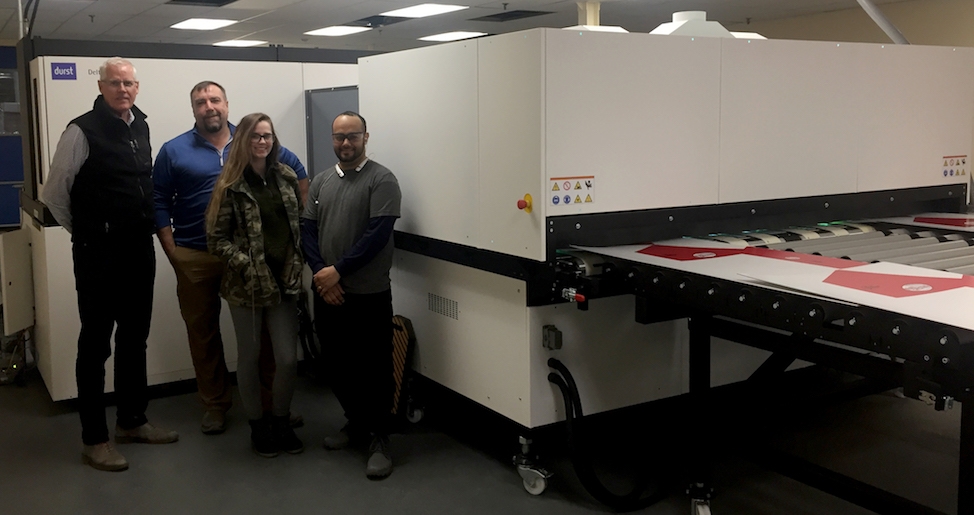
Valley Container, a family-owned and operated corrugated sheet plant for specialty display and packaging solutions, continues its growth in the paper packaging space with the addition of the Durst Delta WT 250, a corrugated printer featuring eco-friendly Durst Water Technology.
“This machine fits well in our workflow as we see it as a complimentary piece for our extensive list of converting machines,” said Robert Niedermeier, General Manager, Valley Container. “The machine is very flexible in just about every way. Specifically, we’re able to slip sample runs in on existing sheets simply through the Durst Workflow software.”
Located in Bridgeport, Conn., in its 120,000-square-foot facility, Valley Container offers a range of corrugated products, shipping boxes, paperboard products and the design and manufacturing of graphic point of purchase displays.
Valley Container has partnered with Durst for its printing equipment needs, with the recent purchase and installation of the digital Durst Delta WT 250. The Delta WT 250 is a corrugated and display packaging print solution featuring Durst Water Technology. Suited for a range of applications, it offers the ability to produce high quality output in standard or custom sizes from a batch size of one.
“Valley’s digital choice began about 10 years ago, as we began investigating this new technology that we knew would be disruptive in our packaging industry,” said Niedermeier. “The first step was to vet the technology and really learn all about what it had to offer.
The Delta WT 250 prints with a maximum six colours up to 3,700 sq ft/h and the multi-Pass printing system can be adapted for specific customer requirements. The different peripheral components offer an easy manual solution right through to a fully automated feed solution.
“There were two major offerings that made the Durst shine brighter. The first was the fact that it had an automated feeding solution making the machine fully efficient on the front end, the most important part of any efficiency study,” said Niedermeier. “The second offering was the ability for the machine to run two sheets side by side. Having the ability to run jobs side by side, we double our output of sheets and really get our productivity ramped up each job.”
Print this page
